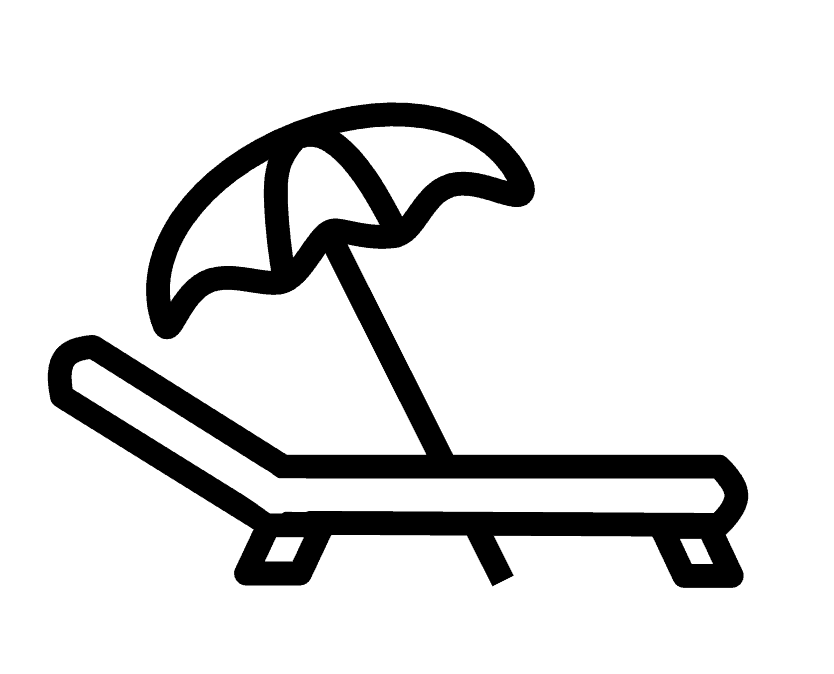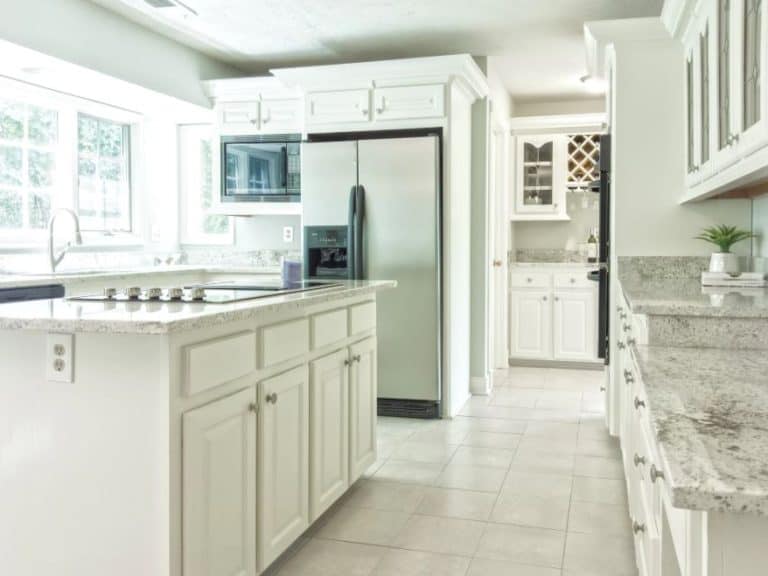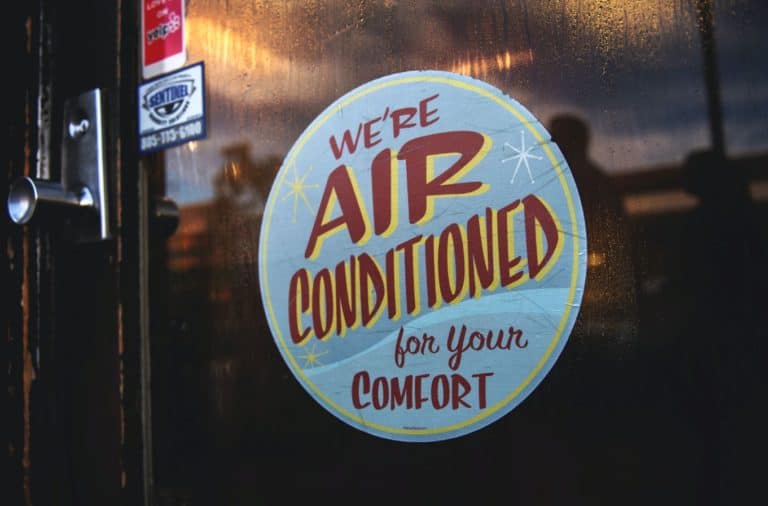If you have or are considering, a whole house fan, then you have probably heard about the cost savings (~1/10th!) compared to A/C. I wanted to know if this was just the sales pitch but also to understand what else we needed to know! Having consulted manufacturers claims, HVAC websites, scientific studies as well as consumer comments I have collated all the following information to help you.
- What is a Whole House Fan?
- How Do Whole House Fans Actually Work?
- The Challenge for Cooling using Whole House Fans
- Whole House Fans Really Do work..here are the key benefits.
- Which locations are suited to Whole House Fans?
- Can You Use a Whole House Fan with Air Conditioning?
- How to Best Use a Whole House Fan?
- What Types of Whole House Fan are there?
- Installation Considerations
- Conclusion
What is a Whole House Fan?
For those of you that don’t know a whole house fan (WHF) is a cooling system for the home that sucks air into the property through open windows, it is then drawn into the attic space and expelled. The airflow through and then out of the house will absorb and remove heat, as well as bringing in cooler air from outside.
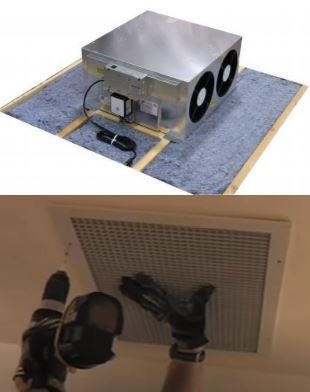
A whole house fan simply consists of a specialist fan unit that is installed in the attic on top of the existing frames.
It has an access hole (approx 15″ x 22″ depending on unit) through the ceiling or wall to the living space that is covered by a grill.
For a skilled handyman or DIY’er comfortable with basic carpentry and wiring, it is a relatively straight-forward weekend project (6-8 hours).
Given the right house layout, the cooling process would actually happen naturally, even without the aid of a fan using the Chimney Effect. The addition of the fan, however, forces the process to start earlier, run faster and allows for a much greater turnover of air.
Chimney Effect
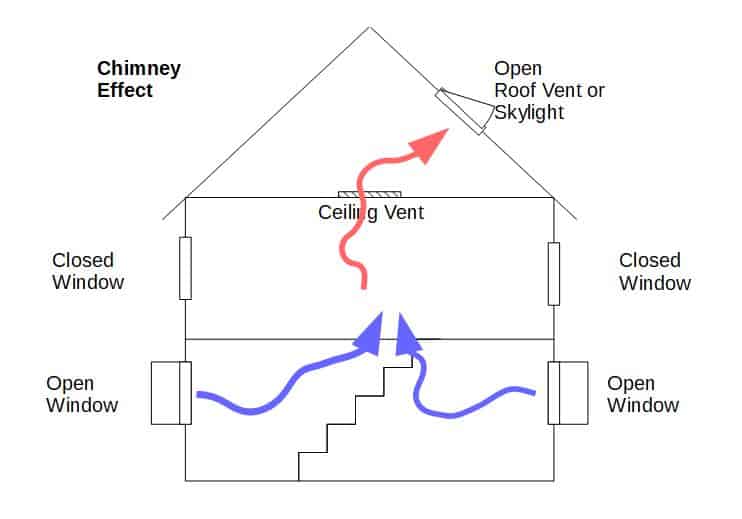
When hot air rises it draws in cooler air underneath to replace it. This effect occurs when cooler air enters on the ground floor or basement, absorbs heat from the room and then rises to the upper floors. If there is a skylight or window open near the top of the house then a flow of air will establish sucking cooler air in at the bottom and hot air escaping at the top.
How Do Whole House Fans Actually Work?
A whole house fan (WHF) works most effectively whenever the outside temperature is lower than the indoor temperature – typically in the evenings and at night through to early morning.
A WHF draws the cooler outside air in through doors or windows, that need to be opened, while forcing the hottest indoor air out of roof vents. As this cycle continues it quickly removes all of the stale hot air inside and replaces it with the cooler, fresh air from outside.
This, however, is not the full story. The goal of using a whole house fan is also to cool your actual home, not just the air inside it.
The Challenge for Cooling using Whole House Fans
The challenge comes in the evening when the air outside has become pleasant and cool. As a home heats up during the day, a large amount of heat is retained in its structure and contents. In a typical 2000 sq ft house several thousand BTU’s of heat is not just absorbed in the air but also in the walls, furniture, and interior spaces of your home.
When it becomes cooler outside, these materials then start to act as radiators! They will radiate the absorbed heat until they reach the same temperature as the surrounding air. This means the contents of your home slowly continue to heat the home’s interior, even if the outdoor temperature is comfortable!
Whole House Fans are successful as they utilize the airflow (convection) of the cooler outside air. Over a period of hours, the airflow draws out the radiated heat from the mass of the structure and contents of the home. This process is called thermal mass cooling.
Do Whole House Fans Really work..here are the key benefits.
The short answer is Yes, Whole House Fans do work and very effectively, but they are not suited to every location. Here are the main reasons why they really are worth considering.
- Cost; a fraction of the cost to run compared to equivalent Central A/C or multiple Window units
- Speed with which they can be effective; can cool a home in a few minutes
- Thermal Efficiency benefits of heat transfer by convection.
- Clean air introduced from the outside and the expelling of stale air; A/C just recirculates the same air.
- Cools more than just the living space so stays cooler longer
Cost
The standard method of comparison is to look at the running costs for the same volume of air that is ‘moved’ by each system. The airflow is measured in cubic feet per minute (CFM). This the volume of air that can be moved by the fan each minute.
The development of modern ‘Smart’ Whole House Fans has led to even greater efficiencies compared to even the best A/C units.
| ‘Smart’ Whole House Fan | 3 tonne A/C Unit | |
|---|---|---|
| Volume of Air moved | 1700 CFM | 1400 CFM |
| Power Required | 140 watts | 3300 watts |
| Efficiency (cfm/watts) | 12 CFM per watt (Good) | 0.42 CFM per watt (Bad) |
As you can see from the table above, a Whole House Fan, can move a lot more air for the same amount of energy. This means that when they are both running the savings can be significant, as explained in the New York Times: “Bringing in the Big Fans“ article.
- a good window AC unit runs on 1.2 kilowatts and costs 14 cents an hour to run
- a three-ton central air unit (a common cooling system), runs on about 3 kilowatts and costs about 36 cents an hour to run
- a ‘Smart’ Whole House Fan draws about 140 watts, costs 1.63 cents
Note: A/C units are not always running at full speed and/or for the same length of time as Whole House Fan units hence the suggested cost savings are in the region of 70-90% depending on your climate.
Speed of Effect
Whole House Fans can give you a noticeable improvement, around the whole home, far faster than a standard A/C unit. It is not uncommon for WHF to provide 20+ Air Changes per Hour. This means it moves a third of the house volume in one minute! This rapid introduction of cooler outside air can quickly create a fresh, comfortable indoor environment. The air-change rate you will choose depends on your climate and how much you will depend on the whole house fan for cooling.

The other benefit is that it creates a cooler second story faster. With A/C the cool air will naturally gather on the lower floors first and then slowly move up the house. Whereas a whole house fan immediately starts removing the hot air from the top of the house. This gives the upper floors, most commonly used for sleeping, a more pleasant environment more quickly than typical AC.
Thermal Efficiency
The cooling effect of convection, as experienced by airflow, is far more efficient than conduction (Caltech.edu). The airflow around the house, of cooler air, will be far better at thermal mass cooling than simply making the rooms slowly cooler, as achieved by A/C.
Clean Air

Whole House Fans very effectively ventilate and remove the hot but also polluted air from inside your home. According to the American Lung Association, the air inside the home is up to 2-5 times more polluted than the outdoor air! This is due to the chemicals that are used in the home, pet dander, germs, allergens, etc.
If you are concerned about sucking in dust or particularly pollen it is possible to simply install screen products such as PollenTec (Amazon Link) that are designed to block 99.9% of dust and allergens. Note: These are only needed on the windows you choose to open for ventilation.
Home Stays Cooler longer
The hot air is vented through the attic to the outside. This means it also cools the attic space which in turn will take longer to heat the next day, meaning the home stays cooler the next day as well.
Which locations are suited to Whole House Fans?
When cooling by ventilation, such as with WHF, the locations that are most suited are dependant on climate. The ideal climate has low humidity, it is hot during the day and cool at night.
To really get the best then you want outside night temperatures to dip at least five degrees lower than the desired indoor temperature. Ten or more degrees is better so you start the next day with a cool house, delaying or eliminating AC use.
UCLA did a study in 2013 stating that whole house fans can replace air conditioning completely in 10 of the 16 California climate zones. As a result, California updated the Title 24 building codes to make whole house fans a prescriptive requirement in all new homes in climate zones 8-14, which makes up about 80% of the state!
Suitable Locations in the USA
If you live in the West (dry, cool nights), a whole house fan makes a lot of sense but in most other climates you would use it in conjunction with AC.
The relatively low humidity and cool evenings in the Northern, Northwestern and high-mountain desert areas of the West and Southwest are also appropriate.
In most areas during moderate summer weather and through the shoulder seasons a whole house fan can be all that is required. It is only during the high humidity or extreme heat waves that using the A/C is needed.
The Southeast and South are frequently too hot and humid, even in the evenings, to get enough cooling from a fan and the shoulder seasons might be so short as not warrant the investment.
Can You Use a Whole House Fan with Air Conditioning?
Yes, sort of! This may seem counter-intuitive, why would you suck out all the inside air if you spend the money making it cold! The trick is using the Whole House Fan BEFORE you start the A/C.
The speed at which a whole house fan can remove the hot air inside your home makes it a great addition, even if the outside air is not as cool as you would prefer. Running the fan for a few minutes not only eliminates the hot air but does so from the top of your home, where most bedrooms are and the part that is last to benefit from using A/C.

A whole house fan can be compared to getting into a car on a very hot day. To quickest way to cool the car and yourself is to open the windows to get rid of the hot air and use the faster convection/evaporation to remove the heat. If it is still not cool enough you then turn on the A/C and close all the windows to further cool the car below the outside temperature.
Note: I found a suggestion that having started using an A/C it is better to not ventilate the house using a fan as it reintroduces moisture (humidity). The implication was that the A/C would have to work harder dehumidifiying and cooling than simply re-cooling already dry air.
How to Best Use a Whole House Fan?
Unless you are simply looking to just quickly ventilate your home then you will only want to use the fan when it’s cooler outdoors than indoors.
When operating the system, it is necessary to ensure you have enough open windows/doors to allow for the volume of air being drawn out. The open window area should roughly equal the roof ventilation area but can be split between different locations around the home. N.B: The airflow can be strong enough to cause doors to slam!
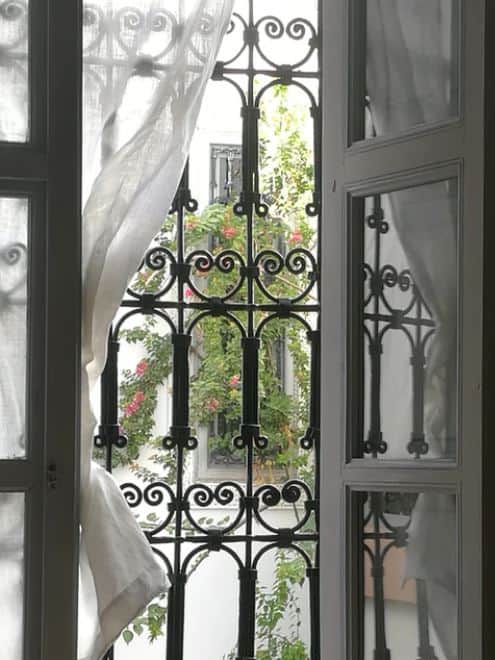
Each opening in the house will create a breeze as fresh air is sucked into the house. You can, therefore, control the rooms that cool first by selecting which windows/doors you open. Ideally, by selecting openings that are far away from the fan, literally the other side of the home(!), air will be drawn across the whole house cooling it in its entirety.
It is suggested that you need to open a few select windows (say 4-6 inches each) or a couple of doors when first turning on the fan at full speed to rapidly ventilate. It is then possible to reduce the openings when you turn the fan speed down, such as at night.
Cooling your house through the night is the key to saving energy and keeping cool with a whole house fan. As such, it is strongly recommended to run the fan through the night to extract the maximum possible amount of heat from the home. This is also when you are most likely to be bothered by any noise that the fan might make and why most of the modern systems have at least two fan speeds.
Note: Never operate the unit without a suitable opening (e.g. a window) – this can create negative pressure in the house and cause dangerous backdrafting with gas appliances (water heater, kitchen oven, furnace, or boiler). This is when deadly exhaust fumes are pulled into the house. It is also worth noting that houses with fireplaces should close the damper.
What Types of Whole House Fan are there?
What is a Traditional Whole House Fan?

The traditional style could come with Belt Driven (motor uses a drive belt to turn fan) or Direct Drive (fan is mounted directly to the motor shaft).
Direct-drive models have the fan mounted directly on the motor shaft. They are usually quieter and require less maintenance than belt-drive models.
Belt-drive models often use less energy per CFM of capacity than do direct-drive because the fan motor is matched more closely to the optimum fan speed. Also, belt-drive models are usually available in larger sizes.
What is a ‘Smart’ or ‘Advanced’ Whole House Fan?
Traditional whole house fan designs tended to be quite large, having larger fans, and often require specialist adaptations to ceiling joists for installation. The main complaint with them is the noise. The last few years, however, have seen innovative new designs that are more practical, efficient, quieter, and easier to install.
At night, when it is recommended that the fans are left on, even the faintest of sounds can be disturbing. The new designs, in comparison, have moved in two directions to solve this problem as well as including other improvements such as WiFi control:
Ducted Whole House Fans
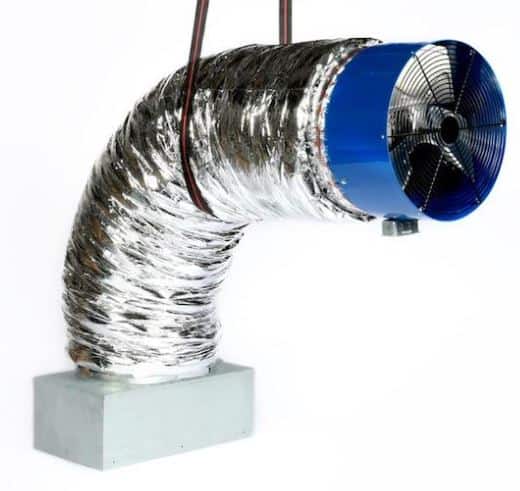
Ducted whole house fans suspend the motor and fan 3 – 12 feet away from the ceiling grille with acoustically lined ducting. This has three key benefits:
- Suspending the motor reduces any direct vibration to the ceiling joists
- Sound tends to travel in a straight line, and because of this, an advanced whole house fan is suspended at a 90-degree angle to dampen the noise.
- The use of specialist acoustically lined ducting also dampens the sound level
Multiple High Efficiency Fans
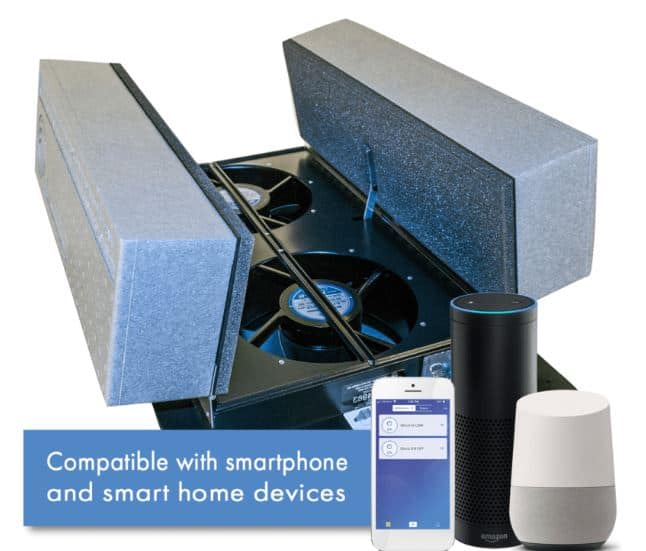
These units utilize multiple, smaller, high-efficiency, fans such as those found in commercial computer rooms. They are then installed inside a casing that fits between standard 16″ or 24″ framing.
Installation Considerations
As mentioned above, the newer models are all designed for installation to be simple and it can be achieved within a few hours but there are a few things that need to be considered:
- Rafter / Joist framing distance in your attic **
- Fan Airflow sizing
- Adequate Roof venting **
- Mounting Position **
- Control/Switches
- Winterizing
- Maintenance
** These items require investigation in your attic before starting your product research.
Rafter / Joist framing distance in your Attic **
Even with a large variety of home designs, building regulations in the USA usually require rafter spacing of 16″ or 24″. Most modern units will be deisgned for one or the other and although it is possible it is much easier if you choose a model that matches your homes structure.
Whilst in the attic it is also worth taking note of the vertical distance available above your intended mounting to ensure there will be suitable clearance. In most cases, a clearance of 18-24 inches should be enough.
Whole House Fan Airflow sizing
What is CFM of a whole house fan?
The amount of airflow required is based primarily on your home size with some consideration for your location. The fan size is measured in Cubic Feet per Minute. This relates to the maximum volume of air that the fan can move per minute. e.g An Airscape 1.7 has an airflow of 1700 CFM (Cubic feet per minute) at high speed and 1000 CFM at low speed.
How many CFM do I need for Whole House Fan?
The calculation:
Measure the floor area of your home (in square feet) and then multiply it by 1.5 to 2 for a standard system.
Standard – Using a Ratio of 1.5 to 2.
A 2000 square foot home requires 3,000 CFM – 4,000 CFM
(2000 sqft x 1.5 = 3000CFM)
This will give you between 11 -15 changes of air per hour and could cool the whole house in around 30 mins. You are unlikely to ‘feel’ this unless you are stood right next to the open window.
(2000sqft x 8ft ceiling height = 16,000cuft / 3000 CFM = 5.3 minutes per change or ~11 per hour)
Other people prefer to ‘feel’ the ‘Breeze Effect’ of the air flowing through the house; multiply by 2.5 to 3
Breeze Effect – Using a Ratio of 2.5 to 3.
A 2000 square foot home requires 5,000 CFM – 6,000 CFM
(2000 sqft x 2.5 = 5000CFM)
This will give you between ~19 – 23 changes of air per hour.
(2000sqft x 8ft ceiling height = 16,000cuft / 5000 CFM = 3.2 minutes per change or ~19 per hour)
Other Whole House Fan Sizing Considerations..
- The suggested CFM Ratio’s are based on ceiling heights of 8-9 feet. If you have higher ceilings then your home volume will be greater and require a higher ratio.
- These CFM flow rates are based on cooling the whole house. If you rarely use large parts of the home then you can reduce the requirements accordingly.
- If you live in an area that has a particularly large temperature difference between day and night, such as some coastal areas then a standard ratio of 1.5 – 2 should be fine.
- Consider using multiple units; larger homes or those that are more spread out may have better success with multiple units.
- Fans tend to be noisier when they are running faster; most fans would be used in the slow mode at night.
Adequate Roof venting **
A Whole House Fan relies on the roof venting to expel all of the hot air. Without adequate ventilation, hot air cannot easily escape from the attic, which creates back-pressure that can substantially reduce the fan’s performance. In some cases, it can even force hot, dusty attic air back into the house through light fixtures and other cracks in the ceiling/attic barrier.
Indeed the U.S. Energy Department, suggests that the best way to improve the performance of a whole house fan is to increase your attic ventilation.
Different manufacturers may specify a different requirement for attic ventilation but in most cases about one square foot of net free area for every 750 cubic feet per minute of fan capacity.
i.e A system that is 3000 CFM would require 4 square feet of Net Free Area Ventilation.
If your house does not have enough or you would like to add more, then extra roof vents can be added for relatively little expense in most cases.
Calculating your Existing Attic Ventilation
In most modern homes the venting is sufficient but as it is so critical to the ultimate success of a whole house fan it should be verified. Venting is achieved by a combination of passive vents and ridge, soffit, eyebrow, roof cap, and gable ventilation.
Each type may then be partially obstructed by grilles, louvers, and/or screens. These reduce the vents ‘Net Free Area’ – the area that can be considered to allow airflow. This Net Free Area (NFA) for a vent is usually given by the vent manufacturer as a percentage; 50% is good rule of thumb if you are not sure.
| Vent Type | Dimensions | Vent Area | NFA | Free Ventilation Area |
|---|---|---|---|---|
| Gable Vent with Louvre | 24″ x 24″ | (24″ x 24″) /144 = 4 ft sq | 50% | 4ft sq x 0.50 = 2ft sq |
| Round Soffit | 10″ diameter | 3.14 × 5″ × 5″ ÷ 144 = .55 ft sq | 50% | 0.55ft sq x 0.5 = 0.28ft sq |
| Ridge | 10 feet | n/a | 13% | 10 ft × .13 = 1.3ft sq |
| = 2 + 0.28 + 1.3 TOTAL = 3.58 ft sq |
Mounting Position **
- Locate this fan in a central location to promote an even replacement of air throughout the home and increase the cooling effect.
- The fan should be at the highest point possible. This utilizes the chimney effect and natural convection (hot air rises) to exhaust the hottest indoor air from the home. i.e In a two-story home, the ideal location for this fan is typically in the open area at the top of the stairs.
- Avoid locating this fan in a narrow space or over hard flooring as the reflection of sound off of hard surfaces can amplify its perceived noise.
- Within the attic, locating the fan near an electrical outlet or power supply can minimize the need for additional electrical work.
- Try and avoid installing in bedrooms as the perception of noise is far greater when the surrounding environment is quiet.
Controls / Switches
In the modern internet world there are a variety of options and combinations available.
Some models require hard-wired switches mounted on the wall, others come with remote controls and then a number are now controllable with Smart Phone Apps or via Smart Home Devices.
The key features regardless of the interface are:
- Fan Speed; being able to adjust the speed of the fan depending on the temperature, noise, and airflow can make a big difference in how successfully the fan is used. e.g. slowing the fan at night to make it quieter or faster when you first turn it on.
- Timer; usually used to turn the fan off at a certain time. N.B: Remember you always need to ensure adequate airflow openings when ever it is in use.
Winterizing/Weatherization your Whole House Fan
In the winter months when you change from staying cool to keeping warm you need to ensure your whole house fan is not a cause of lost warmth.
The traditional style fans, even with louvers that appear closed, can allow air to leak into the attic. In this situation, you can buy a whole-house fan weatherization kit available at many hardware and discount stores. The kit provides a heavy clear plastic cover and self-adhesive plastic channels to hold the plastic. The channels and plastic are applied to the house side of the fan, making seasonal installation and removal convenient.
Newer ‘Smart’ or ‘Advanced’ models tend to have a positive seal that is designed for this purpose and when closed they are airtight.
Maintenance
One of the improvements for the whole house fan is that the newer models are more reliable and in some cases are advertised as being maintenance-free. This usually means that the unit is self-lubricating and is not expected to need any replacement parts over the full life of the unit. This is not always the reality (!) but in most cases, a failed component will mean the replacement of a module, not the removal of the complete unit.
With the traditional style, there may be ongoing maintenance depending on the type; the belt-driven units tend to need more attention with more moving parts. Also, as the traditional style tends to be more ‘open’ in design they are more exposed to things getting snagged or broken but they are also relatively simple, so in many cases the repairs will be simple.
Conclusion
Pro’s and Con’s
Pro’s
- Energy use is lower than A/C
- Fresh clean air
- Faster than A/C to cool
- Cheaper to buy and Install than Central A/C
Con’s
- Not suitable for all climates; Outside air must be cooler
- Doesn’t Dehumidify the air
- Can be Noisy; ideally needs to work at night and some people find the noise irritating (But not any worse than an A/C!)
For many families, Whole House Fans provide acceptable summer comfort, even in hot weather. However, even in the hottest locations, the benefit when used during moderate summer weather and through the shoulder seasons shouldn’t be forgotten.
Using a Whole House Fan in conjunction with A/C may give you a more efficient and cost effective result where you can get the benefit of both systems.
For further information on different ways to keep your house cool then check out our : Advanced Guide on How to Keep you House Cool in the Heat.
